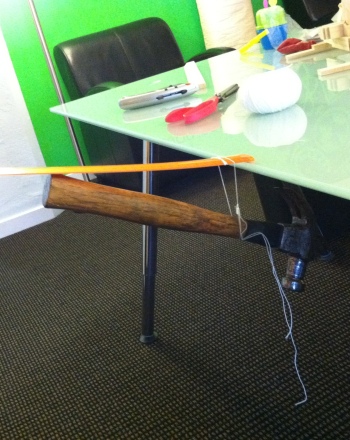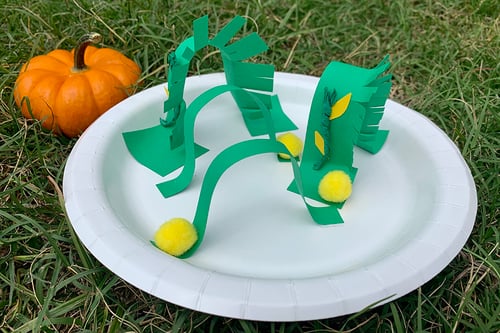Science project
Center of Balance
Grade Level: 4th - 6th; Type: Physiology
Objective:
To find out how to lower a person’s center of balance.
The purpose of this experiment is to learn whether it is easier to balance on a narrow ledge or on a rope if a person is holding their arms out to the sides or holding a long pole.
Research Questions:
- Why does a tight rope walker carry a long pole?
- Why does a person stick out their arms if they think they are going to fall?
- Do any animals use parts of their body to help them keep their balance?
- What does it mean to have a center of balance?
Tight rope walkers make balancing while walking across a rope seem effortless. Even if the rope is hung over a deep canyon or a tank full of sharks, tight rope walkers seem to glide along from one side to the other without ever slipping or losing their footing. Of course, part of this is due to their years of practice, but part of it is also that they carry a long pole with them. Unaided, a person’s center of balance is located just beneath their ribcage, about halfway from the ground to the top of a person’s head. This means that we balance from this part of our bodies. Carrying a long pole lowers our center of balance, just as holding out our arms to the sides does. If the pole is long enough, a person’s center of balance can be lowered to their knees, ankles or even the tops of their feet. A lower center of balance makes it easier for anyone to balance while walking across even a narrow rope.
Materials:
- A rope
- A meter stick
- Three meter sticks taped together
- Three meter sticks taped together with 5 lb. weights attached to the ends
- A stopwatch
- A friend to help
Experimental Procedure:
-
Have your friend time each crossing and record the times on a chart such as the one below.
-
Start by walking across a curb or the edge of a playground.
-
Walk down the length of the curb while keeping your arms crossed across your chest. Do so as quickly as you can without falling off the edge of the curb.
-
Walk down the length of the curb while keeping your arms held out to the sides. Do so as quickly as you can without falling off the edge of the curb.
-
Walk down the length of the curb while holding a meter stick. Do so as quickly as you can without falling off the edge of the curb.
-
Walk down the length of the curb while holding the three meter sticks that are taped together to form one very long pole. Do so as quickly as you can without falling off the edge of the curb.
-
Walk down the length of the curb while holding the three meter sticks with weights at the end. Do so as quickly as you can without falling off the edge of the curb.
-
Place a length of thick rope (about 2 inches thick) along the curb you just balanced across.
-
Repeat steps 3-7 while balancing across the rope.
-
If you have time, switch roles with your friend and record their results.
Curb
|
|
time
|
number of falls
|
|
no arms
|
|
|
|
arms
|
|
|
|
meter stick
|
|
|
|
3 meter sticks
|
|
|
|
weighted meter sticks
|
|
|
|
|
time
|
number of falls
|
|
no arms
|
|
|
|
arms
|
|
|
|
meter stick
|
|
|
|
3 meter sticks
|
|
|
|
weighted meter sticks
|
|
|
Terms/Concepts: Balance; Center of balance; Center of gravity
References:
Education.com provides the Science Fair Project Ideas for informational purposes only. Education.com does not make any guarantee or representation regarding the Science Fair Project Ideas and is not responsible or liable for any loss or damage, directly or indirectly, caused by your use of such information. By accessing the Science Fair Project Ideas, you waive and renounce any claims against Education.com that arise thereof. In addition, your access to Education.com's website and Science Fair Project Ideas is covered by Education.com's Privacy Policy and site Terms of Use, which include limitations on Education.com's liability.
Warning is hereby given that not all Project Ideas are appropriate for all individuals or in all circumstances. Implementation of any Science Project Idea should be undertaken only in appropriate settings and with appropriate parental or other supervision. Reading and following the safety precautions of all materials used in a project is the sole responsibility of each individual. For further information, consult your state's handbook of Science Safety.













